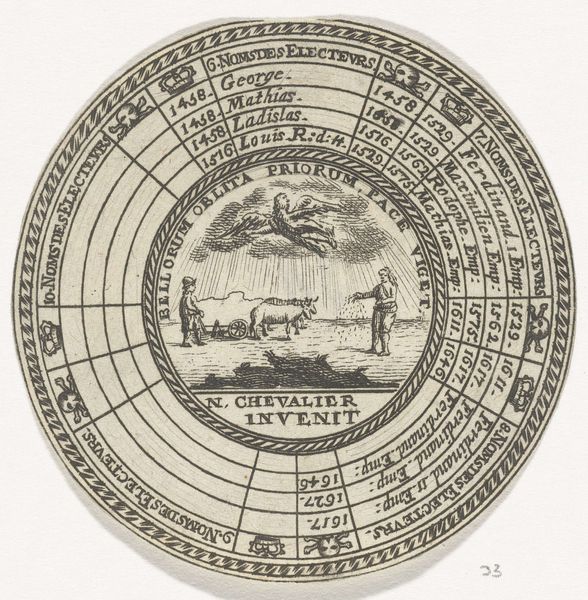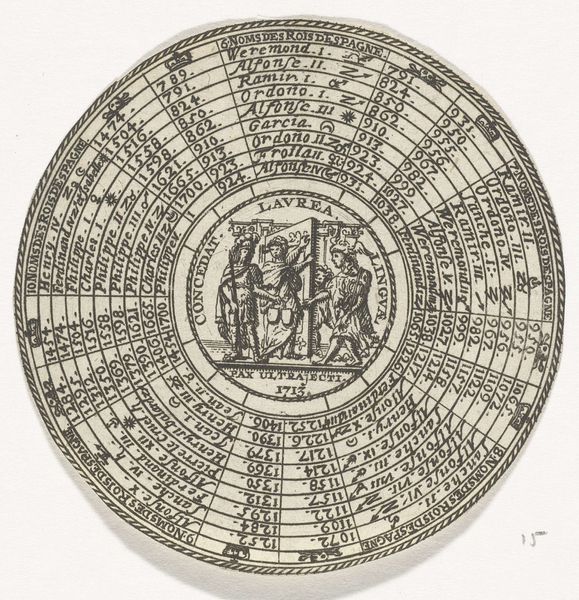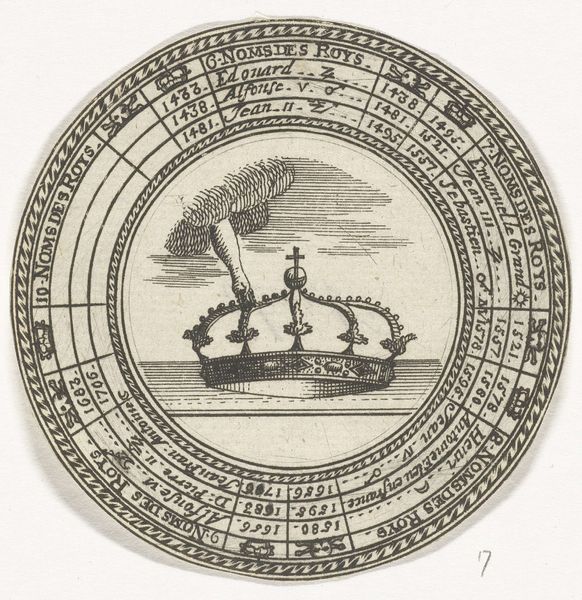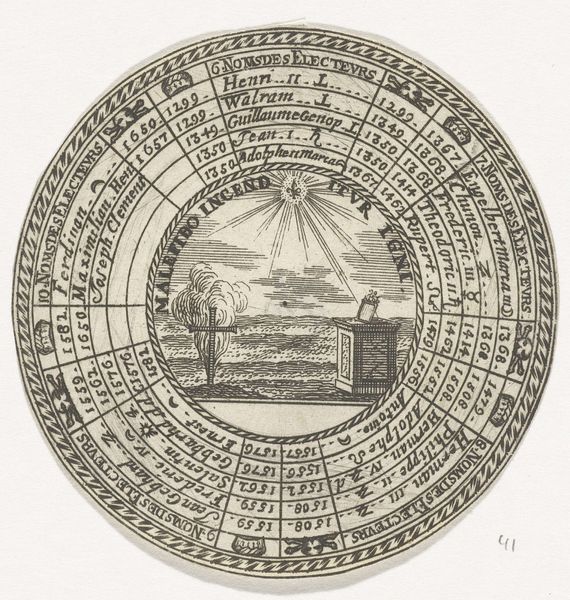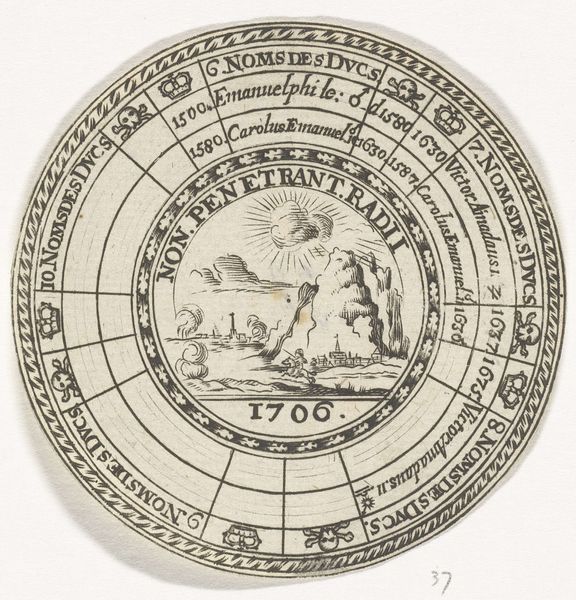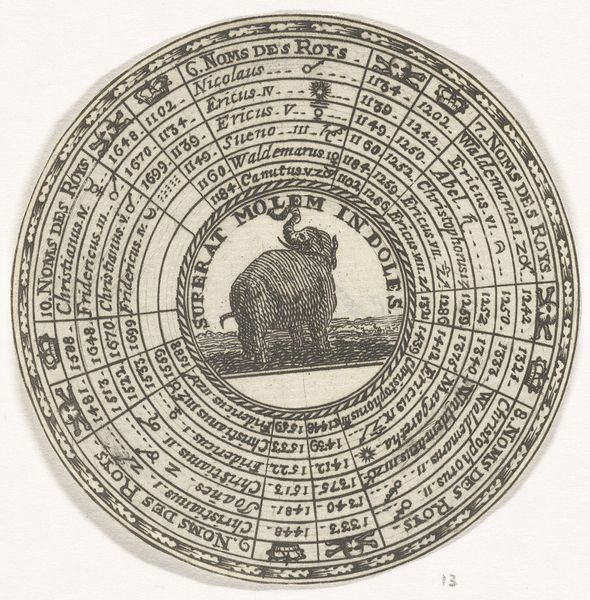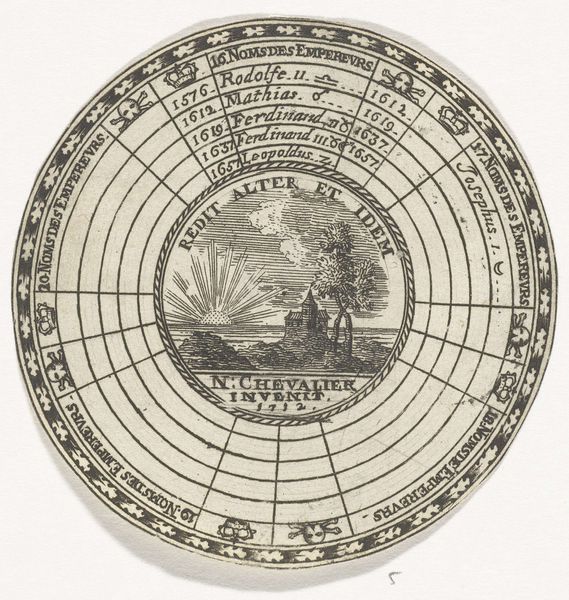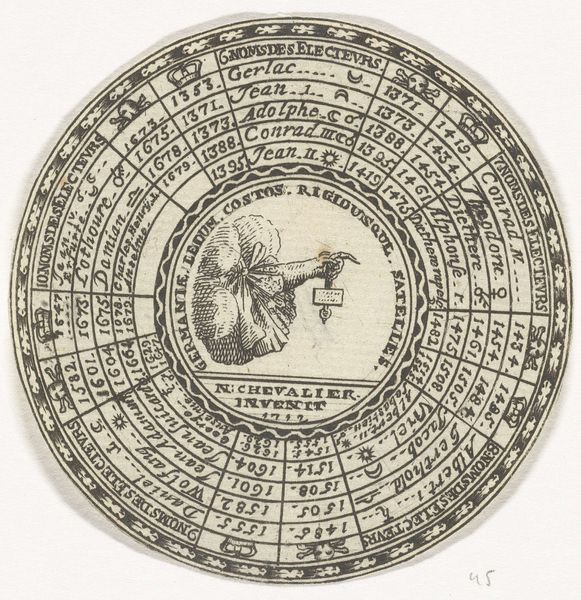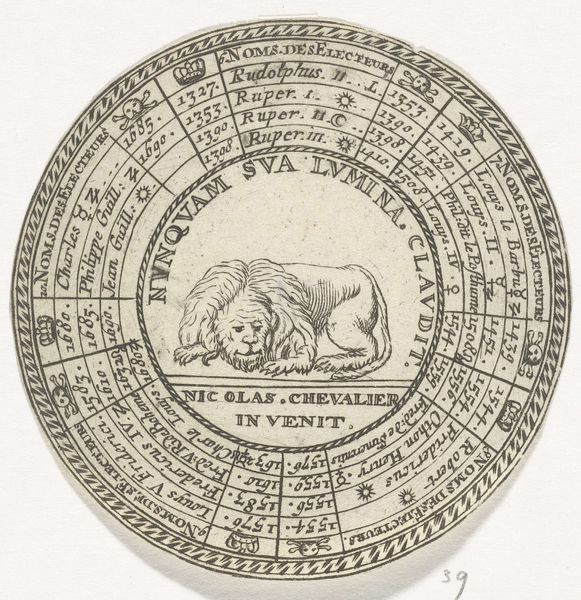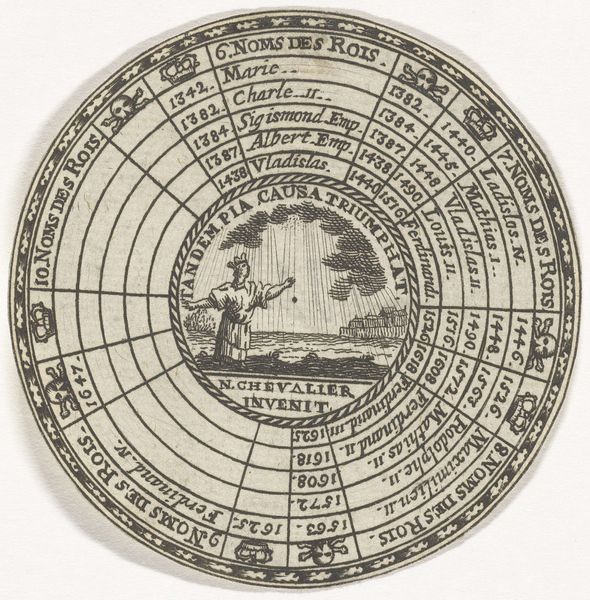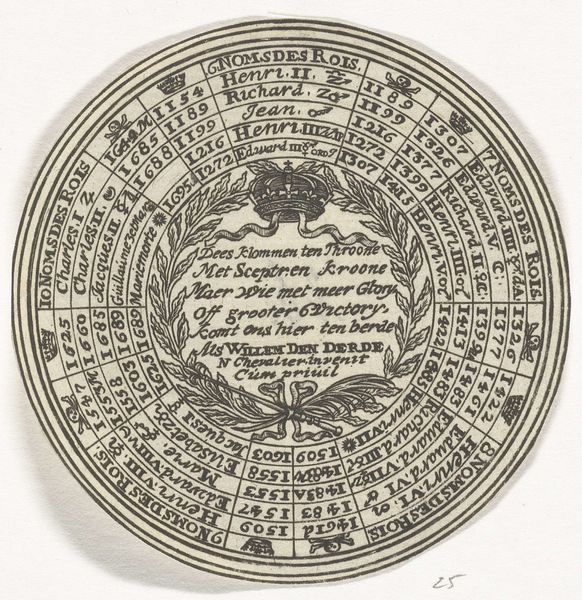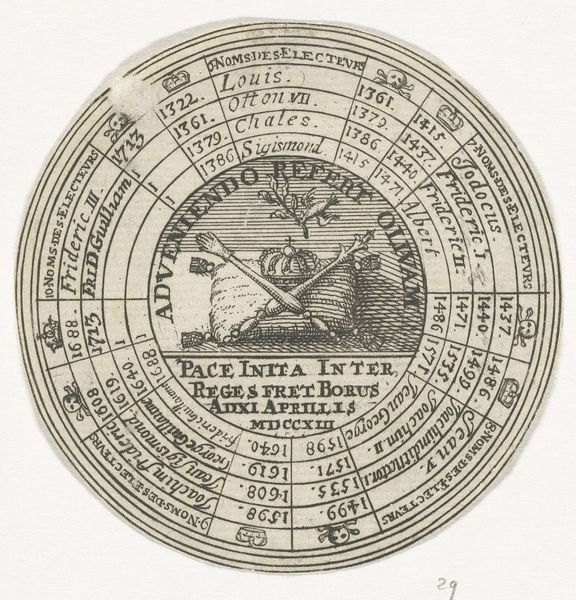
print, engraving
# print
#
old engraving style
#
geometric
#
pen-ink sketch
#
line
#
pen work
#
islamic-art
#
engraving
#
columned text
Copyright: Rijks Museum: Open Domain
Curator: This intriguing engraving, dating from 1708, is titled "Penning met een embleem en met de namen van de Ottomaanse sultans"—Medal with an emblem and the names of the Ottoman Sultans, in English. It is the work of an anonymous artist. Editor: It looks like some kind of astronomical or navigational tool—a disc crowded with tiny text, surrounding an evocative, dreamlike scene with a moon-like face presiding over a vast, choppy sea. There’s a lonely tower or building on the horizon. It’s strangely haunting for such a small print. Curator: Absolutely. Its function likely lies within the tradition of presenting rulers’ genealogies in symbolic and geometric designs. Note the surrounding text listing names and dates; it seems almost scientific at first glance, a claim to order and legitimacy typical of early modern power display. But the integration of a lunar landscape hints at something beyond mere political function. Editor: I'm immediately drawn to the labor that went into producing this piece, thinking of the artisan meticulously carving each line into the metal plate. The repetitive nature of inscribing all those names must have been incredibly time-consuming, grounding it in a social context far removed from celestial musings of emperors and astronomical phenomenon. What sort of workshop produced such an object? How was this knowledge or craft transmitted? Curator: Excellent points. This piece engages in cross-cultural dialogue by fusing Ottoman imperial imagery and genealogy with the symbolic language popular in Europe at the time, thereby allowing it to perform both political and cultural work across borders. Editor: So, beyond being a tool of political validation, this print also speaks volumes about cultural exchange. Who would own it? Was it disseminated among court members, crafted for a select group of intellectuals, or available on a much broader scale to anyone who would study its strange amalgamation of power and symbolism? Curator: Exactly. And I wonder, too, if this was displayed publicly in spaces meant for trade, perhaps hinting at political negotiations that often hinge upon material resources and objects. Editor: This analysis has truly shifted my perspective on this object. Beyond just marveling at its unique composition, now it also has a place in my imagination filled with all of these different sorts of workshops and social practices.
Comments
No comments
Be the first to comment and join the conversation on the ultimate creative platform.
